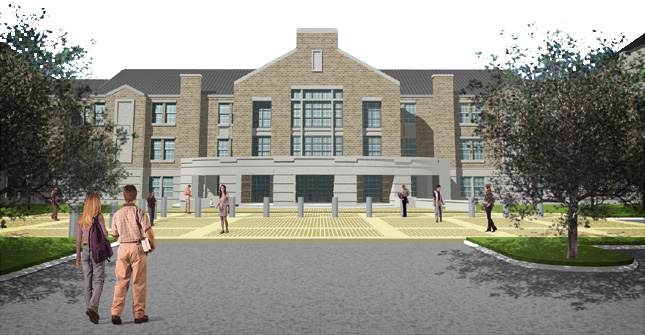HOUSTON, SEPTEMBER 29, 2004
Ramesh Sharma
NRIPress
Kalpana Chawla Hall
General Building Features:
Co-Ed
Three Floors
Central Air & Heat
75% Single Room Suites &
25% Double Rooms
KC Hall is a co-educational residential facility which will house 421 students.
- KC Hall is located close to the Business Building, Pickard Hall, Ransom Hall Computer Lab, and much more!
- KC Hall will have 9 Resident Assistants living in the building as well as 2 full-time professional Hall Directors and 10 Peer Counselors.
WHO WAS KALPANA CHAWLA?
University of Texas at Arlington alumna Dr. Kalpana Chawla was Flight Engineer and Mission Specialist 2 aboard the U.S. Space Shuttle Columbia that was lost during re-entry into the earth's atmosphere February 1, 2003.Dr. Chawla was responsible for maneuvering the Columbia as part of several experiments in the shuttle's payload bay. Selected by the National Aeronautics and Space Administration (NASA) in December 1994, she was also the prime robotic arm operator on a 1997 space shuttle mission that focused on how the weightless environment of space affects various physical processes.
Born in India, she was the first woman from that nation to go into space. She received her master's of aerospace engineering from UTA in 1984. The UTA College of Engineering has established a scholarship in her name.
She graduated from Tagore School, Karnal, India, in 1976 and received a bachelor's degree in aeronautical engineering from India's Punjab Engineering College in 1982
.
Then, she moved to the United States to go to graduate school at the University of Texas-Arlington, where she received a master's degree in aerospace engineering in 1984. Then, she moved to Boulder, Colo., to pursue a doctorate in aerospace engineering, which she received in 1988.
Her career with NASA began in 1988 when she went to work for the Ames Research Center in California. Chawla's work at Ames centered on powered-lift computational fluid dynamics, which involves aircraft like the Harrier.
She left Ames in 1993 to join Overset Methods Inc. in Los Altos, Calif., as vice president and research scientist. She headed a team of researchers specializing in simulation of moving multiple body problems. Her work at Overset resulted in development and implementation of efficient techniques to perform aerodynamic optimization.
However, the successful career outside of NASA was brief. The agency selected her as an astronaut candidate in December 1994, and she reported to Johnson Space Center in March 1995.
Her first flight was STS-87, the fourth U.S Microgravity Payload flight, on Space Shuttle Columbia from Nov. 19 to Dec. 5, 1997. She was a mission specialist and operated Columbia's robot arm.
She returned to space in Jan. 16, 2003, aboard Columbia. She served as mission specialist during the 16-day research flight. The STS-107 crew conducted more than 80 experiments.

